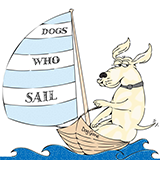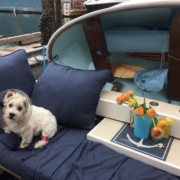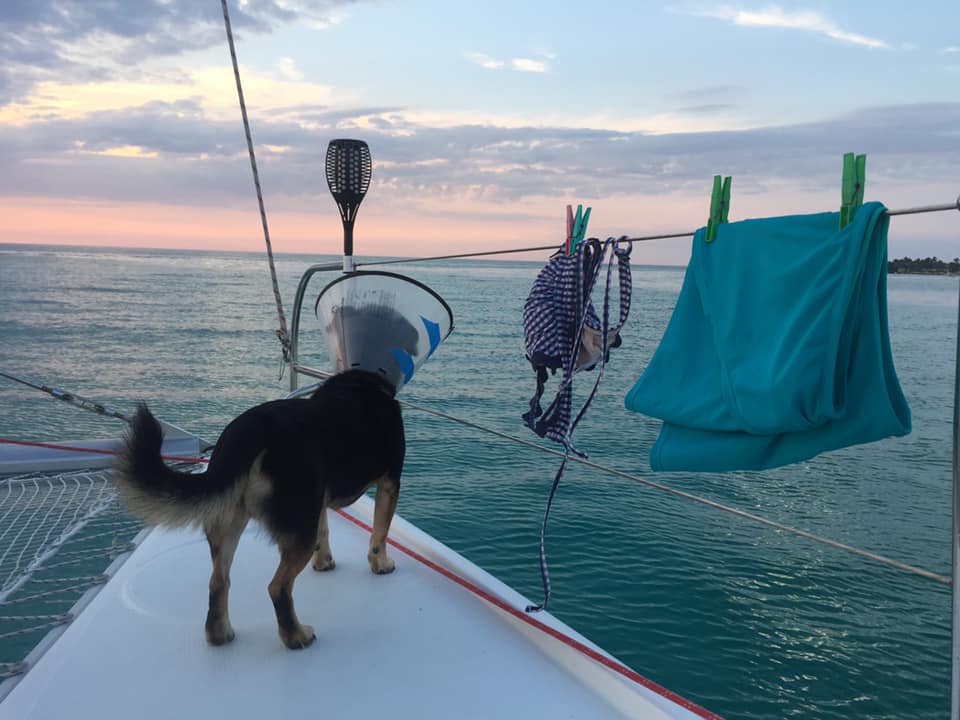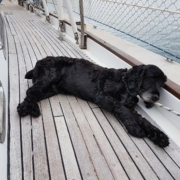Meet Ren – Dogs Who Sail’s Birthday Girl
A big shout out to a little salty sea dog – darling Ren, Happy 2nd Birthday to you gorgeous girl.
Recently Ren has had to share her boat with a group of boys scouts. Ren’s human Thomas facilitates a High Adventure program at Sea Base in Islamorada. The program runs for about 13 weeks. Six kids, two adults and five days of sailing, snorkeling and fishing. All the things we love in life.
Ren & Thomas, we salute you.

Questions from Dogs Who Sail Members
Can you domesticate a stray boat yard dog?
Last week Dogs Who Sail member, Shane B is at the end of her tether. She reached out for advice to help her understand the behaviour of her newly adopted dog. Earlier this year while working on their boat in a boat yard in the Philippines, Shane and her partner fell in love with a stray puppy who was only eight weeks old. Six months later they are concerned as the puppy still won’t go to the toilet on the boat. Yes, that old chestnut many of us are familiar with.
To add to Shane’s dilemma, through persistent barking and whining, the puppy has successfully trained her humans to take her to land when she is ready to go potty. In a land home this is an ideal scenario but for boat life, we would love to train our dogs to go to the toilet on the boat. Acknowledging her puppy’s request, Shane gets her puppy into a collar and leash, and off to land they go. Once on land, the puppy is still demanding her independence and insists the collar and lead be removed before she will toilet.
Until recently, Shane was giving in to her puppy’s demands. Now, if puppy refuses to go potty with her leash on, the couple will take her back onboard without toileting. Here she will hold her bladder for 12 hours at which point Shane feels for her dog and ends up taking her to land. Back to square one.
Shane felt she was doing the right thing by taking in a stray dog and giving it a safe and comfortable life full of love and adventure. Clearly this adorable puppy who was born a boat yard dog has inherited her dog mother’s independence. If Shane wants to keep the dog and her dream of sailing across oceans alive, once they finish working on their boat, they will need to spend considerable time bonding and training with their beloved dog.
Where to from here?
As we support Shane through this period, we can also learn from her experience. When we commit to a dog, we commit for life, taking on all of their characteristics, and we work through the trials and tribulations together. Granted there are situations where a dog may not be a good fit due to some form of aggressive behaviour.
I am by no means here to sit in judgement of anyone for their choices, instead I am reminded that dogs and boats don’t always go together and as a dog’s guardian, I advocate the modification of our plans to fulfil the commitment we made when we brought the dog into our family.
Shane, we wish you and your free spirited little dog all the very best with bonding and training. Please connect with the Dogs Who Sail community whenever you need support or guidance. We are here for you.

Toileting tips and tricks offered by the Dogs Who Sail community
A significant number of our 3,000 Dogs Who Sail members can empathize with Shane because we too have agonized over the toileting issue onboard. Here are some the suggestions Shane received to help her toilet train her dog on their boat.
- Collect some of your dogs urine by soaking it up with a paper towel and then rub it over the fake grass pee mat on the boat. For extra strength place the paper towel under the pee mat. Remember a dog’s nose is 1,000 times more sensitive than a human’s nose.
- Be consistent with training. You must make a commitment to your dog.
- Have a code word for your dog which they will always relate to going to the toilet – ‘Go potty!’ ‘Wee wee!’ etc. Use this same verbal cue on the boat and on land as well.
- Take the pee mat to land with you. Use your code word and see if your dog will begin using the mat on land first.
- When they do go to the toilet on the boat, give them lots of praise and treats. Yippee! Have a party!
- If the dog goes to the toilet in the wrong place, don’t scold them.
- Take your dog to the pee mat first thing in the morning.
- Watch Dogs Who Sail TV Episode 1 – An interview with sailing vet Dr Sheridan Lathe from Vet Tails Sailing Chuffed about the health side of toileting your dog onboard.
- Watch Dogs Who Sail TV Episode 2 – An interview with head trainer Ken Innes from Assistance Dogs Australia about how he trains their assistance dogs to go to the toilet on command.
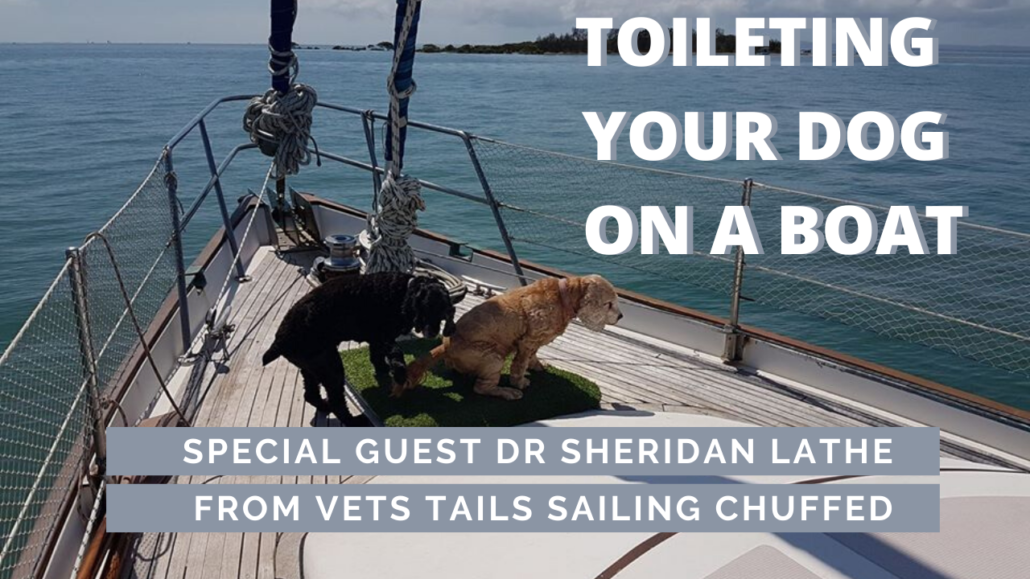
Dogs Who Sail – Doggy Social Pages
If there was one thing you wanted for your dog onboard what would it be?
While Harry was watching me in the galley this week, he and I discussed this question. I suggested things to him and he twisted and turned his head which I took as a deep understanding.

When we posed the question to our Dogs Who Sail members this is what the answers were:
- Comfort
- A treadmill
- Dolphins for her to talk to all day long
- Seasickness prevention
- A patch of green grass for Mindy to pee on, so training would not have to start all over again every season we go to live aboard
- More dog friendly beaches
- A playmate
- A remote control ball
- A really big comfy snuggly bed
- Green fields to run and roll in
- Grass
- A larger yacht
- To be comfortable and not stressed
- A way for them to get on and off the swim platform that doesn’t take up too much room
- A piece of land for their business
- A solution to steep companionway stairs so Mila feels safe going up and down on her own
- A dock
- Another dog
Christmas is not far away. Maybe Santa will deliver some of these wishes – in particular the bigger yacht!
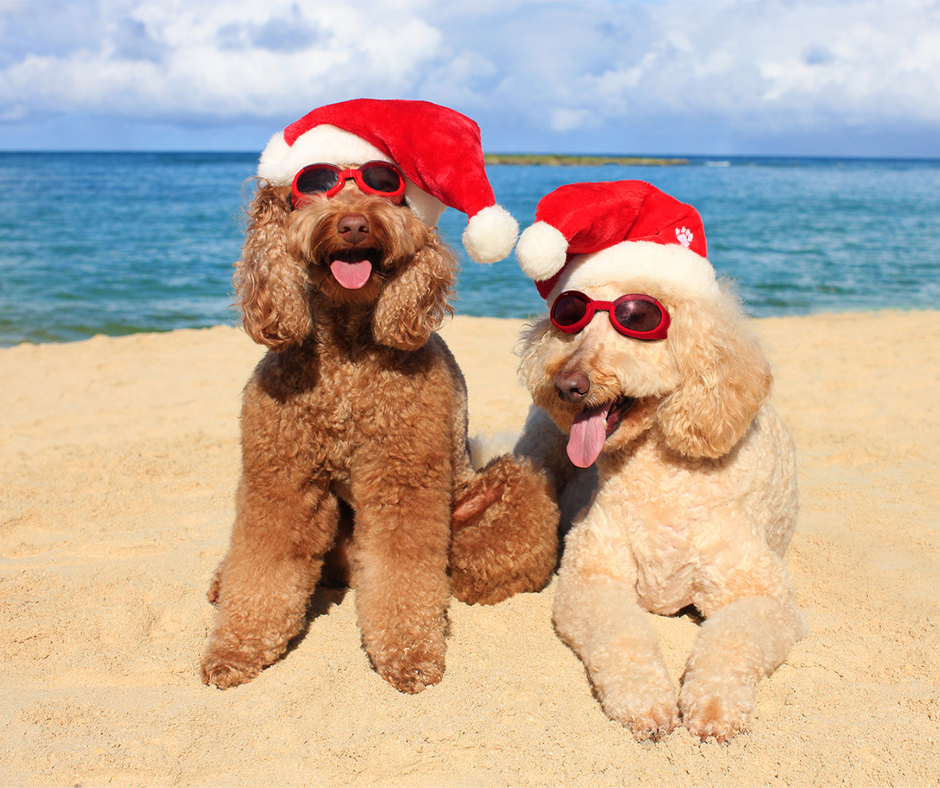
Ginger Dog Biscuits – A Seasickness Remedy Recipe
Ginger Biscuit Ingredients
- 1/2 cups whole wheat flour
- 1 ½ cup unbleached all purpose flour
- 1 teaspoon ground ginger root
- 1 1/2 teaspoons dry yeast
- 2 tablespoons unsulphured blackstrap molasses
- 1 Tablespoon vegetable oil or olive oil
- 1 cup water
- 1/4 cup wheat bran
or oat bran
- 1 teaspoon cinnamon
Directions for Homemade Dog Biscuits
- Put all the ingredients in your bread maker and press dough cycle or knead together (the old fashioned way).
- When the dough is ready to use, take it out of the bread maker or your kneaded ball.
- Divide it into 3 portions.
- Roll the dough into sheets that are ¼” thick.
- Use a cookie cutter to make your desired shape.
- Let the cookies rise for 45 minutes.
- Bake the cookies in a 275 degree F (135 degree C) oven for 1 hour.
- Turn off the oven and let the cookies finish drying overnight to make them nice and crunchy.
- Store the cookies in an airtight container and in a cool dry place.
Recipe from Best Dog Treat Recipes

And that’s a wrap. If you have some news to share, please get in touch at admin@dogswhosail.com or we’ll see you in the Dogs Who Sail Facebook group.
Fair winds and big slobbery doggy kisses.
Tanya xxoo

,
